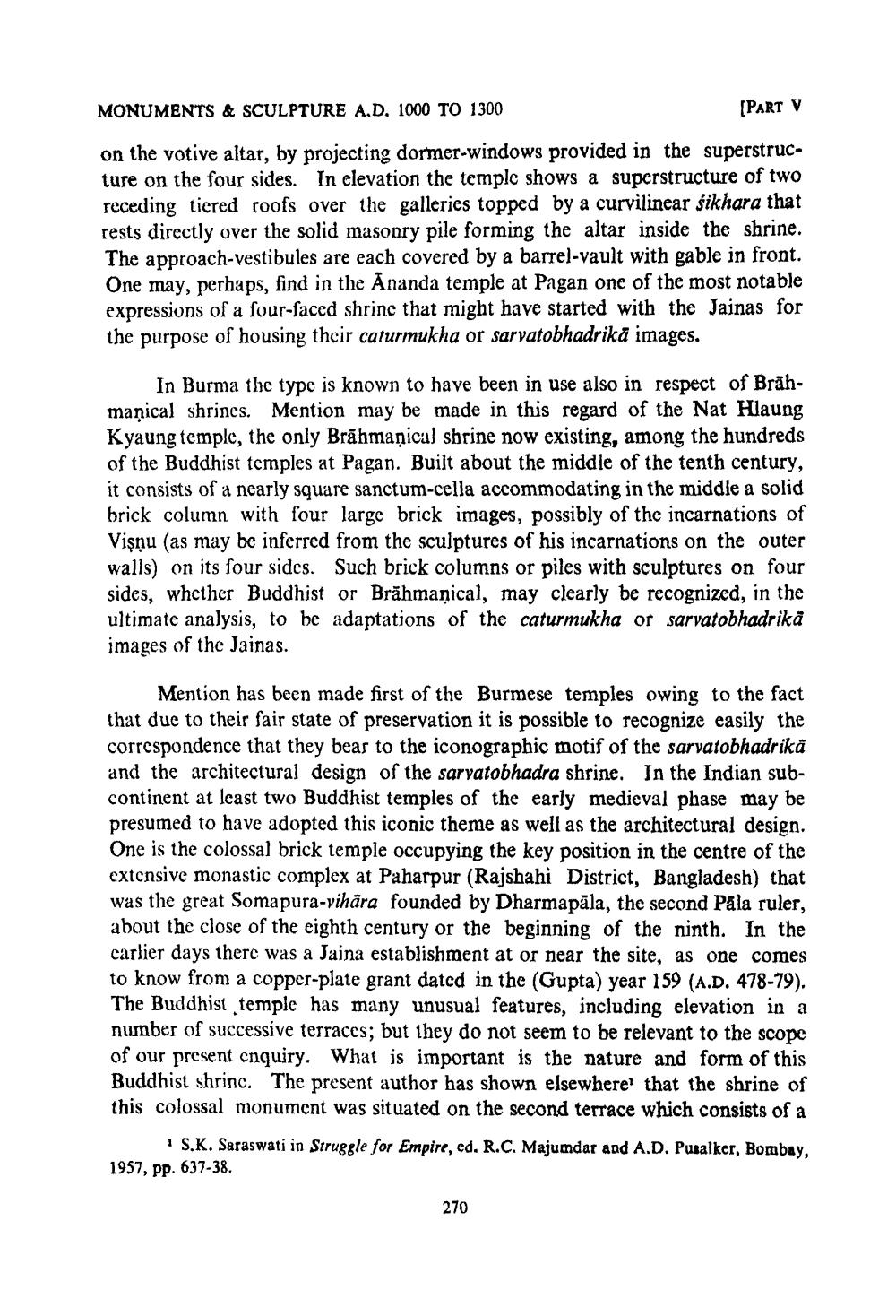________________
MONUMENTS & SCULPTURE A.D. 1000 TO 1300
[PART V
on the votive altar, by projecting dormer-windows provided in the superstructure on the four sides. In elevation the temple shows a superstructure of two receding tiered roofs over the galleries topped by a curvilinear sikhara that rests directly over the solid masonry pile forming the altar inside the shrine. The approach-vestibules are each covered by a barrel-vault with gable in front. One may, perhaps, find in the Ananda temple at Pagan one of the most notable expressions of a four-faced shrine that might have started with the Jainas for the purpose of housing their caturmukha or sarvatobhadrikā images.
In Burma the type is known to have been in use also in respect of Brähmanical shrines. Mention may be made in this regard of the Nat Hlaung Kyaung temple, the only Brahmaṇical shrine now existing, among the hundreds of the Buddhist temples at Pagan. Built about the middle of the tenth century, it consists of a nearly square sanctum-cella accommodating in the middle a solid brick column with four large brick images, possibly of the incarnations of Vişņu (as may be inferred from the sculptures of his incarnations on the outer walls) on its four sides. Such brick columns or piles with sculptures on four sides, whether Buddhist or Brāhmaṇical, may clearly be recognized, in the ultimate analysis, to be adaptations of the caturmukha or sarvatobhadrikā images of the Jainas.
Mention has been made first of the Burmese temples owing to the fact that due to their fair state of preservation it is possible to recognize easily the correspondence that they bear to the iconographic motif of the sarvatobhadrikā and the architectural design of the sarvatobhadra shrine. In the Indian subcontinent at least two Buddhist temples of the early medieval phase may be presumed to have adopted this iconic theme as well as the architectural design. One is the colossal brick temple occupying the key position in the centre of the extensive monastic complex at Paharpur (Rajshahi District, Bangladesh) that was the great Somapura-vihāra founded by Dharmapāla, the second Păla ruler, about the close of the eighth century or the beginning of the ninth. In the carlier days there was a Jaina establishment at or near the site, as one comes to know from a copper-plate grant dated in the (Gupta) year 159 (A.D. 478-79). The Buddhist temple has many unusual features, including elevation in a number of successive terraces; but they do not seem to be relevant to the scope of our present enquiry. What is important is the nature and form of this Buddhist shrine. The present author has shown elsewhere1 that the shrine of this colossal monument was situated on the second terrace which consists of a
1 S.K. Saraswati in Struggle for Empire, ed. R.C. Majumdar and A.D. Pusalker, Bombay, 1957, pp. 637-38.
270




